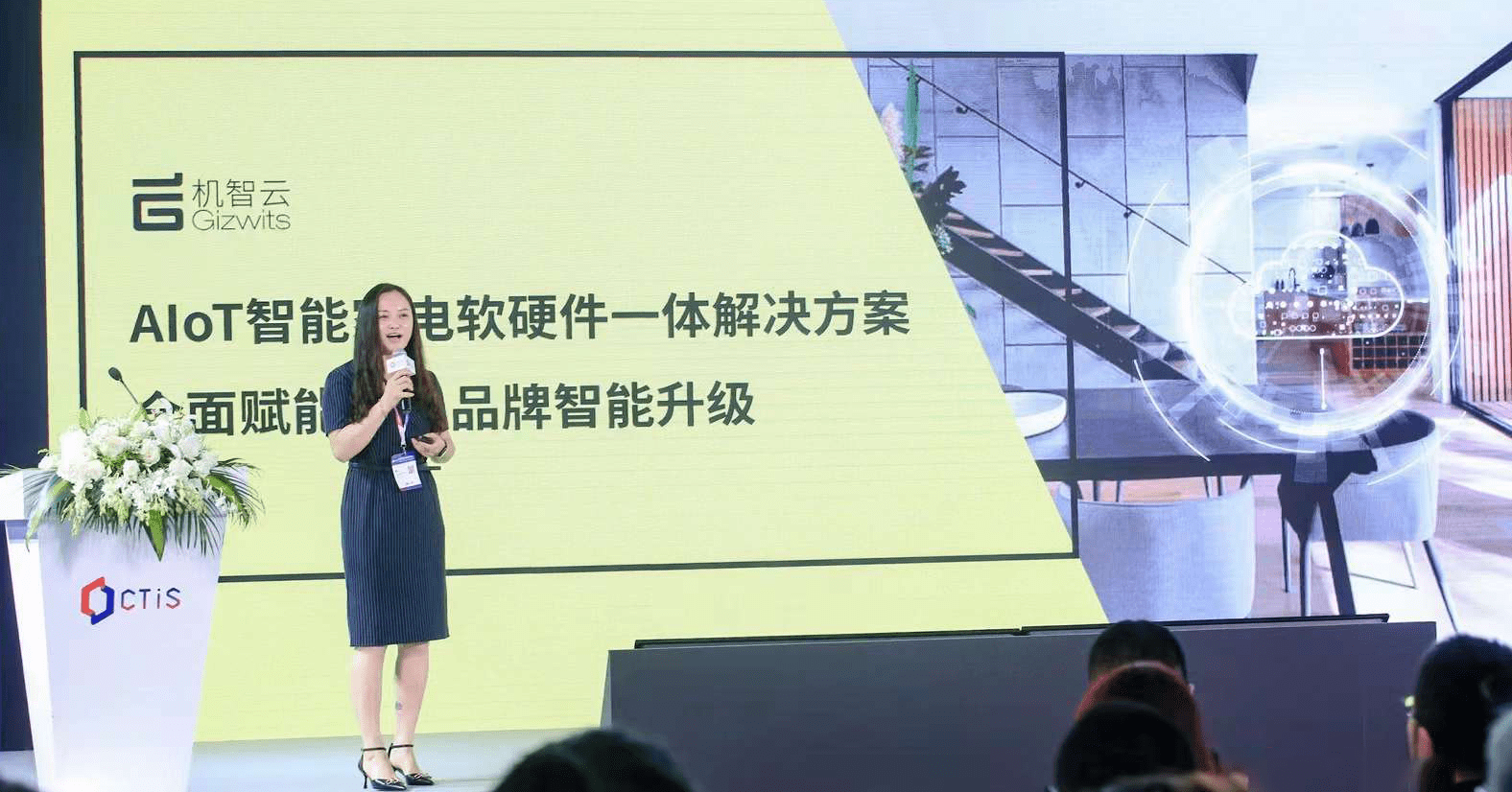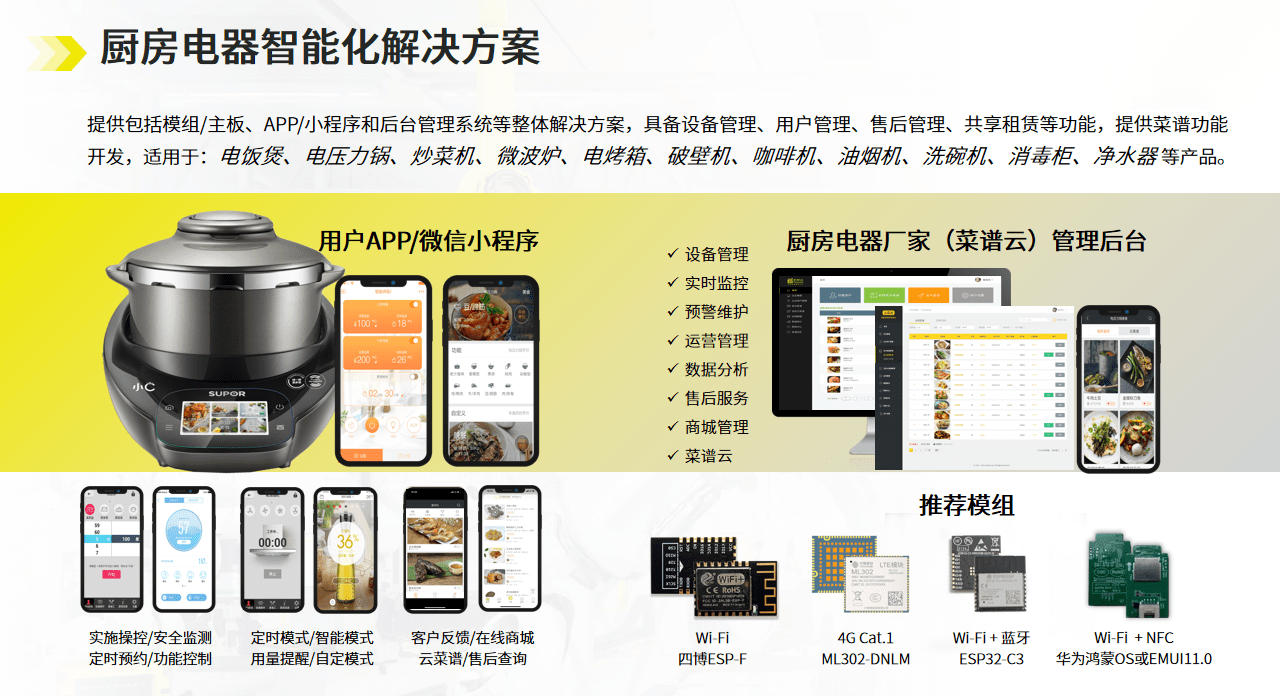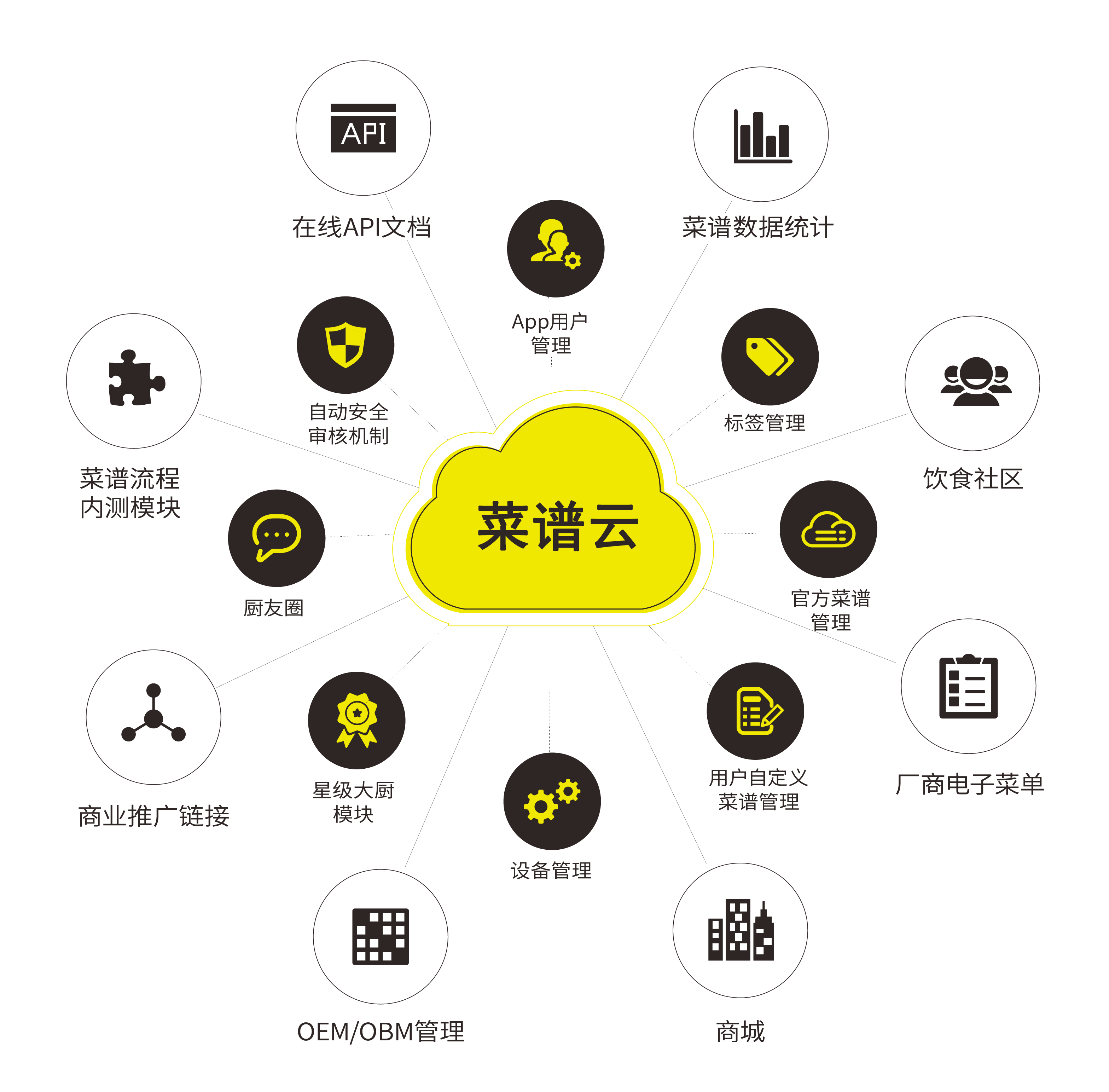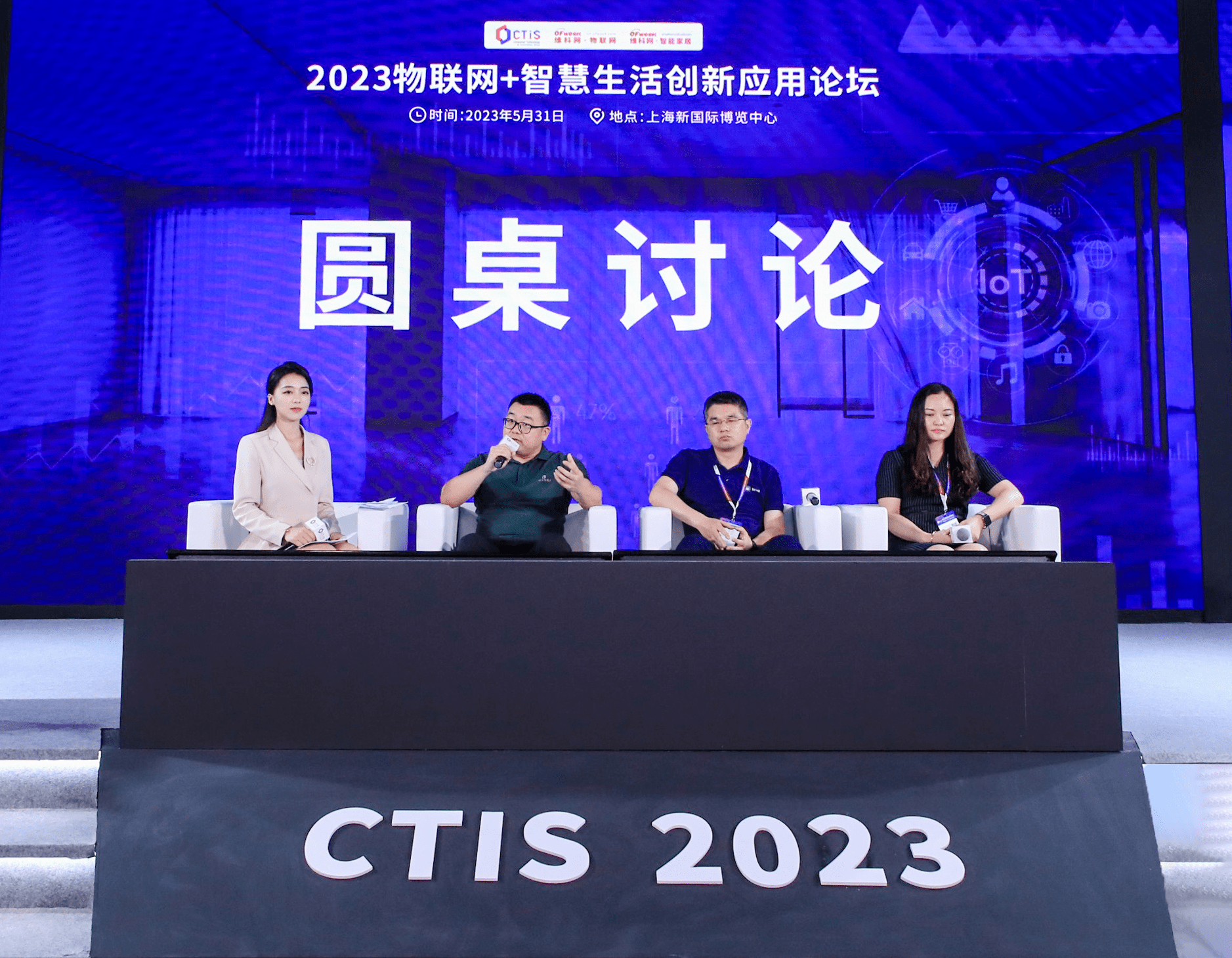 Technology peripherals
Technology peripherals
 AI
AI
 Empower all things and lead the future intelligently! Gizwits IoT debuts at 2023 IoT + Smart Life Innovation Application Forum
Empower all things and lead the future intelligently! Gizwits IoT debuts at 2023 IoT + Smart Life Innovation Application Forum
Empower all things and lead the future intelligently! Gizwits IoT debuts at 2023 IoT + Smart Life Innovation Application Forum
At present, with the emergence of large generative AI models, AI technology has achieved leapfrog development. New technologies such as passive IoT, AIoT, satellite IoT, IoT, Matter1.0, and RedCap have also entered a stage of rapid development. The transformation of the Internet of Things from "Internet of Everything" to "Intelligence of Everything" is accelerating simultaneously. Under the guidance and drive of the Digital China development strategy, the breadth and depth of the integration and application of the Internet of Things with thousands of industries are accelerating.
In order to explore the application and implementation solutions of the Internet of Things in smart life and other fields under the new economic situation, and further promote the evolution of Internet of Things technology and breakthroughs in application scenarios. On May 31, the "2023 Internet of Things Smart Life Innovation Application Forum" hosted by Global Sources and hosted by OFweek Internet of Things and OFweek Smart Home Network was grandly held at the Shanghai New International Expo Center. Xing Yan, Vice President of Gizwits Cloud, was invited to attend this forum to give a speech and roundtable discussion, and delve into the mystery of the integration of IoT technology and industry with the on-site guests.

This forum focuses on hot topics in related fields such as smart home, smart home appliances, IoT chips, Matter standards, smart office, and smart scene ecology. Six big names from the industry were invited to share the future development of the Internet of Things. . Gizwits Vice President Xing Yan gave a keynote speech on "Gizwits AloT Smart Home Appliances Software and Hardware Integrated Solution, Comprehensively Empowering Smart Upgrades of Home Appliance Brands", sharing Gizwits' years of R&D and implementation experience in the field of smart home appliances, and assisting enterprises in digitalization Transformation application practices.
In the digital era, the integration of new technologies such as the Internet of Things, big data, and artificial intelligence with home appliances is a general trend. As consumers' demands for intelligence, personalization, and convenience continue to increase, how traditional home appliance companies can quickly realize product intelligence at low cost and seize market share has become an important consideration for manufacturers. As an AIoT full-stack (comprehensive) IoT platform service provider, Gizwits has been committed to providing enterprises with IoT needs with product intelligent solutions suitable for the development needs of enterprises at all stages, and helping customers build IoT service systems.
In view of the development needs of brand enterprises at different stages, Gizwits provides PaaS and SaaS products and services suitable for various stages of enterprise development, including intelligent device access system GDCS, intelligent device management system GDMS, Internet of Things commercial leasing system GALS, IoT Networked big data service platform GI and IoT private cloud platform GIE, etc., provide enterprise operation management services such as equipment/user management, production management, warehousing management, asset management, after-sales management, information push, data analysis functions, etc., helping enterprises from "selling Products” transitioned to “selling services”.

For enterprises with weak software and hardware R&D capabilities, Gizwits provides AloT smart home appliance software and hardware integrated solutions. Through the "smart cloud module/PCBA APP/mini program equipment operation management system" software and hardware integration services, product shortening R&D design cycle, saving R&D costs, and helping enterprises quickly realize equipment intelligence with higher efficiency, lower costs, and shorter implementation cycles. Currently, Gizwits provides intelligent solutions for multiple categories of products including environmental appliances, kitchen appliances, pet appliances, health appliances, bathroom appliances, cleaning appliances, home equipment, HVAC equipment, photovoltaic equipment, etc.

For example, in the small kitchen appliance industry, there are many product categories and many brand companies. In the research and development process of smart kitchen appliances, many companies, especially small and medium-sized enterprises with weak digital foundation, will face high cost investment and long research and development cycle. , high operating costs and other issues. Low-cost, efficient implementation, and fully functional smart kitchen appliance solutions are the first choice for the above-mentioned enterprises.
Gizhiyun intelligent solution for kitchen appliances, in terms of IoT, provides integrated software and hardware solutions such as cloud modules, PCBA boards, smart APP/WeChat applet, PaaS cloud, SaaS equipment operation management system, etc. The solution meets a variety of IoT needs such as remote control of kitchen appliances, data analysis, equipment management, and voice control, and realizes digital operation management of the equipment life cycle of various categories of kitchen appliances, helping companies improve product R&D efficiency, reduce R&D costs, and accelerate Product launch.

In terms of value-added services, Gizwits Cloud uses big data to accurately analyze user portraits to help companies optimize product functions and enhance product value. In order to meet users' needs for value-added services such as recipes, social sharing, and online shopping, Gizwits combines industry characteristics and product attributes to provide kitchen appliance companies with "recipe cloud" value-added services, allowing companies to manage recipes in the cloud. Users can The APP can view cloud recipes online and supports one-click cooking function through cloud recipes. This value-added service can not only provide more considerate and convenient services and bring a better user experience, but can also effectively improve product differentiation and increase market competitiveness.
During the roundtable discussion at the forum, the organizer invited three guests, Xing Yan, Vice President of Gizwits Cloud, Liu Jie, Chief Software Engineer of Tailing Microelectronics, and Xie Jun, General Manager of Digital World Business Unit, to participate in this roundtable discussion and discuss together. Hot topics such as the future market situation of the smart home industry and the impact and role of AI large models on the smart home industry.

Today, the development of Internet of Things technology has brought huge opportunities to all walks of life and made important contributions to the construction of Digital China. With the continuous development of Internet of Things technology, the networking, remote control, APP management, sensing technology, voice recognition and other technologies of consumer electronics intelligent terminal products are increasingly accepted and recognized by consumers. The in-depth integration of consumer electronics products and the Internet of Things will become an important direction for industry development, and all-round intelligent products will become the mainstream in the future.
The above is the detailed content of Empower all things and lead the future intelligently! Gizwits IoT debuts at 2023 IoT + Smart Life Innovation Application Forum. For more information, please follow other related articles on the PHP Chinese website!

Hot AI Tools

Undresser.AI Undress
AI-powered app for creating realistic nude photos

AI Clothes Remover
Online AI tool for removing clothes from photos.

Undress AI Tool
Undress images for free

Clothoff.io
AI clothes remover

AI Hentai Generator
Generate AI Hentai for free.

Hot Article

Hot Tools

Notepad++7.3.1
Easy-to-use and free code editor

SublimeText3 Chinese version
Chinese version, very easy to use

Zend Studio 13.0.1
Powerful PHP integrated development environment

Dreamweaver CS6
Visual web development tools

SublimeText3 Mac version
God-level code editing software (SublimeText3)

Hot Topics
 1376
1376
 52
52
 What are the roles of artificial intelligence and machine learning in the Internet of Things?
Jan 30, 2024 pm 11:21 PM
What are the roles of artificial intelligence and machine learning in the Internet of Things?
Jan 30, 2024 pm 11:21 PM
The integration of artificial intelligence (AI) and machine learning (ML) into Internet of Things (IoT) systems marks an important progress in the development of intelligent technology. This convergence is called AIoT (artificial intelligence for the Internet of Things), and it not only enhances the capabilities of the system, but also changes the way IoT systems operate, learn and adapt in the environment. Let’s explore this integration and what it means. The Role of Artificial Intelligence and Machine Learning in IoT Enhanced Data Processing and Analytics Advanced Data Interpretation: IoT devices generate massive amounts of data. Artificial intelligence and machine learning can cleverly cull this data, extract valuable insights, and identify patterns that are invisible to a human perspective or traditional data processing methods. Predictive analytics uses artificial intelligence and machine learning to predict future trends based on historical data
 Is robotic IoT the future of manufacturing?
Mar 01, 2024 pm 06:10 PM
Is robotic IoT the future of manufacturing?
Mar 01, 2024 pm 06:10 PM
Robotic IoT is an emerging development that promises to bring together two valuable technologies: industrial robots and IoT sensors. Will the Internet of Robotic Things become mainstream in manufacturing? What is the Internet of Robotic Things? The Internet of Robotic Things (IoRT) is a form of network that connects robots to the Internet. These robots use IoT sensors to collect data and interpret their surroundings. They are often combined with various technologies such as artificial intelligence and cloud computing to speed up data processing and optimize resource utilization. The development of IoRT enables robots to sense and respond to environmental changes more intelligently, bringing more efficient solutions to various industries. By integrating with IoT technology, IoRT can not only realize autonomous operation and self-learning, but also
 Practical experience in Java development: using MQTT to implement IoT functions
Nov 20, 2023 pm 01:45 PM
Practical experience in Java development: using MQTT to implement IoT functions
Nov 20, 2023 pm 01:45 PM
With the development of IoT technology, more and more devices are able to connect to the Internet and communicate and interact through the Internet. In the development of IoT applications, the Message Queuing Telemetry Transport Protocol (MQTT) is widely used as a lightweight communication protocol. This article will introduce how to use Java development practical experience to implement IoT functions through MQTT. 1. What is MQT? QTT is a message transmission protocol based on the publish/subscribe model. It has a simple design and low overhead, and is suitable for application scenarios that quickly transmit small amounts of data.
 Christie: dual drive of technology + innovation brings unlimited possibilities
Apr 23, 2024 am 08:10 AM
Christie: dual drive of technology + innovation brings unlimited possibilities
Apr 23, 2024 am 08:10 AM
As a technology company driven by innovation, Christie is able to provide comprehensive solutions, rich industry experience and a complete service network in intelligent audio-visual technology. At this year's InfoCommChina, Christie brought RGB pure laser projectors, 1DLP laser projectors, LED video walls, and content management and processing solutions. At the event site, a large-scale customized outer spherical dome specially designed for astronomical displays became the focus of the scene. Christie named it "Sphere Deep Space", and the Christie M4K25RGB pure laser projector gave it "green vitality" . Mr. Sheng Xiaoqiang, senior technical service manager of the Commercial Business Department in China, said: It is not difficult to realize an outer spherical dome projection, but it can be made smaller and the color
 The current state of manufacturing in 2024: full digitalization
Feb 28, 2024 pm 06:10 PM
The current state of manufacturing in 2024: full digitalization
Feb 28, 2024 pm 06:10 PM
Across the world, manufacturing in particular seems to have gradually overcome the difficulties during the pandemic and the supply chain disruptions of a few years ago. However, manufacturers are expected to face new challenges by 2024, many of which can be solved through wider application of digital technologies. Recent industry research has focused on the challenges manufacturers face this year and how they plan to respond. A study from the State of Manufacturing Report found that in 2023, the manufacturing industry is facing economic uncertainty and workforce challenges, and there is an urgent need to adopt new technologies to solve these problems. Deloitte made a similar point in its 2024 Manufacturing Outlook, noting that manufacturing companies will face economic uncertainty, supply chain disruptions and challenges in recruiting skilled labor. no matter what the situation
 How IoT sensors and AI are revolutionizing smart buildings
Apr 12, 2024 am 09:10 AM
How IoT sensors and AI are revolutionizing smart buildings
Apr 12, 2024 am 09:10 AM
With the continuous development of smart technology, smart buildings have become a powerful force in today's construction industry. In the rise of smart buildings, Internet of Things (IoT) sensors and artificial intelligence (AI) have played a crucial role. Their combination is not just a simple technical application, but also a complete subversion of traditional building concepts, bringing us a more intelligent, efficient and comfortable building environment. Over the past few years, and especially in the wake of the COVID-19 pandemic, the challenges facing building management have increased and evolved as expectations for facilities managers have changed and viability needs have expanded. The shift to more integrated and flexible work environments within offices is also changing the way commercial buildings are used, requiring real-time visibility into building usage, occupant trends
 C++ development experience sharing: Practical experience in C++ IoT programming
Nov 22, 2023 pm 07:59 PM
C++ development experience sharing: Practical experience in C++ IoT programming
Nov 22, 2023 pm 07:59 PM
Practical Experience of C++ Internet of Things Programming The Internet of Things (IoT) is a hot topic that has attracted much attention in recent years. It connects various devices and sensors to each other to achieve information sharing and intelligent control. In the development of the Internet of Things, C++, as a powerful programming language, has the characteristics of high performance and efficiency, so it is widely used in the field of the Internet of Things. In this article, I will share some practical experience accumulated in C++ IoT programming, hoping to provide some useful reference for developers.
 Application of data modeling in the Internet of Things
Jan 13, 2024 pm 12:51 PM
Application of data modeling in the Internet of Things
Jan 13, 2024 pm 12:51 PM
With the further development of big data and artificial intelligence, the Internet of Things is increasingly developing in the direction of AIOT. The Internet of Things infrastructure will become a new generation of information infrastructure, forming a trinity of "Internet of Things", "Digital Internet" and "Intelligent Internet" architecture. The collection, storage, analysis, mining and intelligent application of IoT infrastructure data are very important. To this end, we need to systematically model IoT data and establish a complete and standard IoT data modeling system to provide basic guarantees. In this way, we can better analyze, mine and apply IoT data and further promote the development of IoT. The object model aims to standardize and semantically describe, identify and manage objects, and promote the intelligence and efficiency of the Internet of Things. IoT ontology modeling: Purpose: To solve the problem of "what is an object?"



